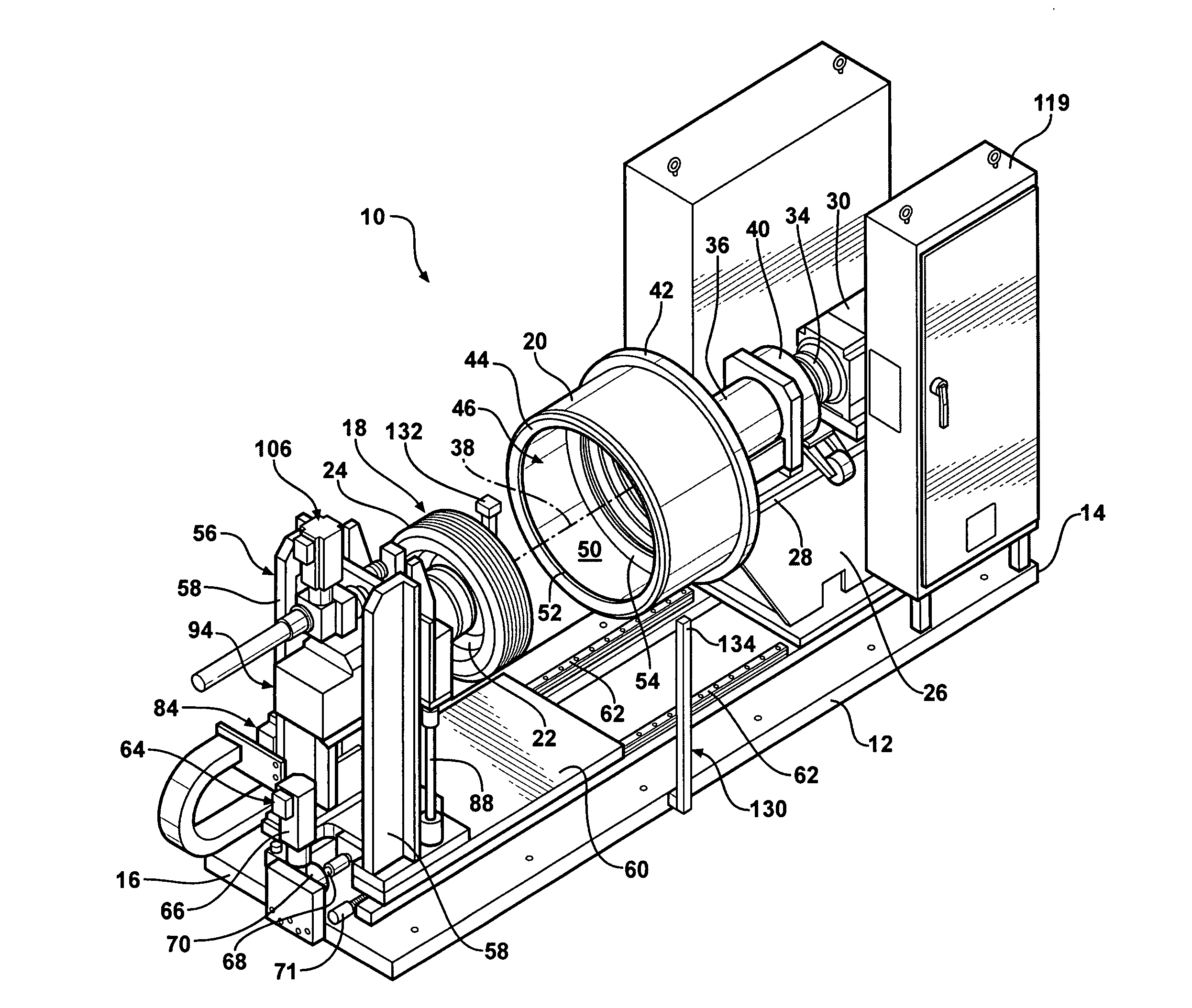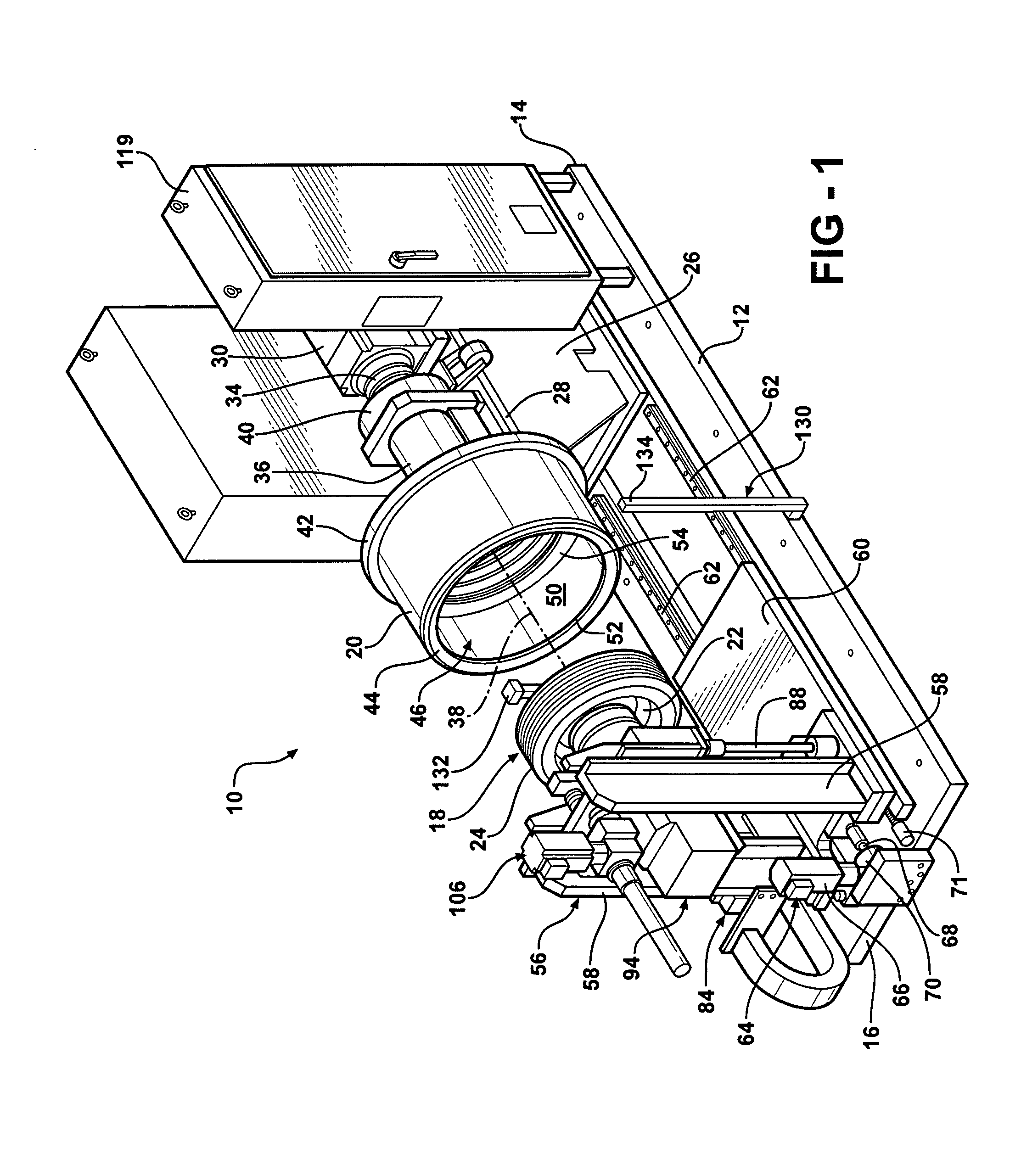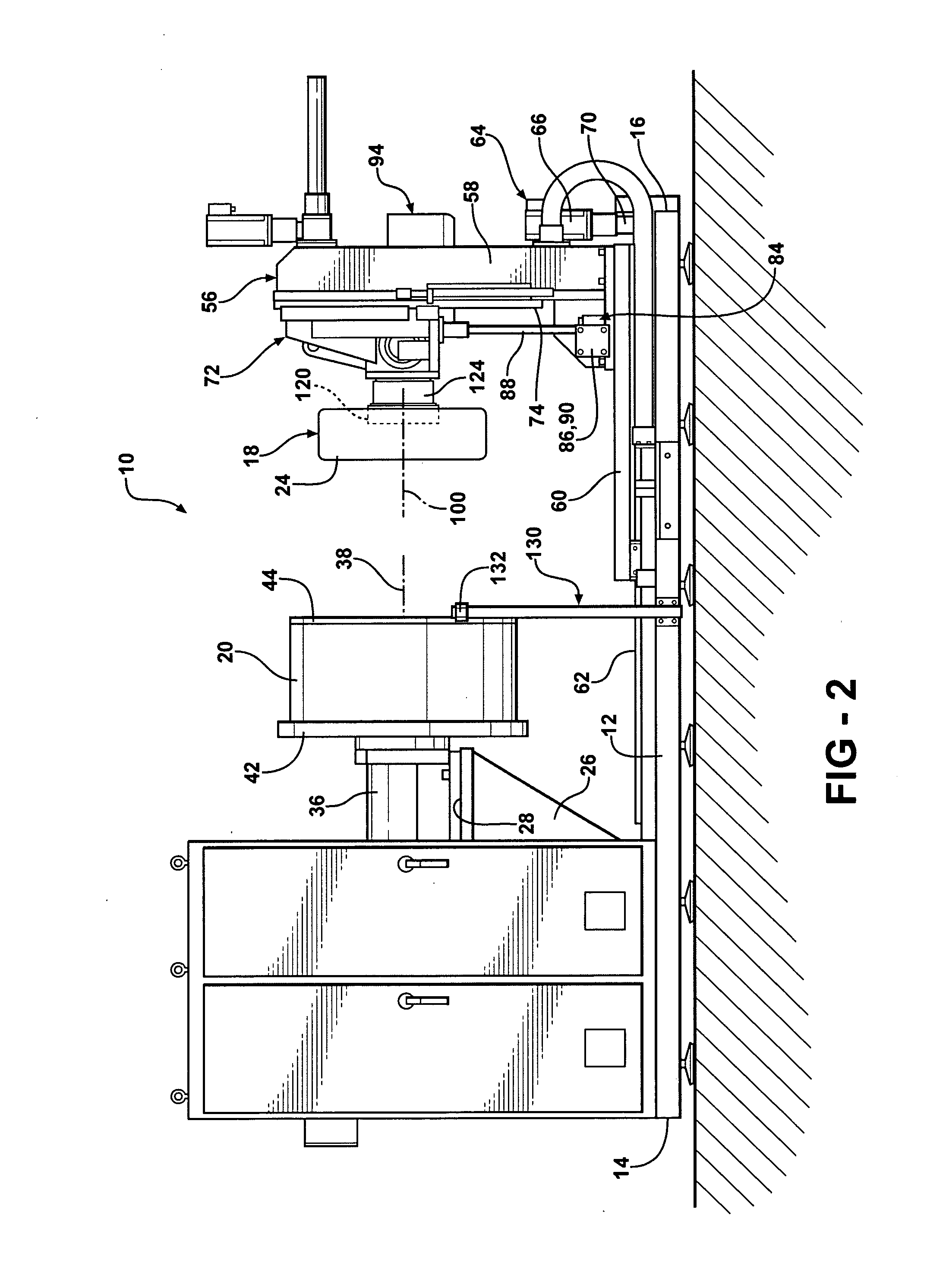Biaxial wheel test assembly
a test assembly and wheel technology, applied in vehicle tyre testing, instruments, roads, etc., can solve the problems of introducing errors in test data, complex mathematical algorithms are necessary to estimate actual loads, and frictional and hysteresis losses occurring within the support structure between load cells and wheel-and-tire assemblies that are difficult or impossible to account,
- Summary
- Abstract
- Description
- Claims
- Application Information
AI Technical Summary
Benefits of technology
Problems solved by technology
Method used
Image
Examples
Embodiment Construction
[0022]Referring to the Figures, FIGS. 1 and 2 disclose a biaxial wheel test assembly, generally shown at 10, that is provided for fatigue and durability testing of wheel components of a motor vehicle, such as, wheel rims, wheel hubs, wheel bearings, wheel bolts, and / or other braking, steering, and suspension components. The test assembly 10 is also provided for load versus strain mapping measurements of the above-listed wheel components. The test assembly 10 includes a primary base 12 or platform that extends between first 14 and second 16 ends and supports a wheel-and-tire assembly 18 in engagement with a rotating drum 20. The wheel-and-tire assembly 18 includes a wheel rim 22 with a tire 24 mounted to it.
[0023]A riser 26 is mounted to the first end 14 of the primary base 12 for rotatably supporting the drum 20 at a predetermined height above the primary base 12. The riser 26 includes an upper supporting surface 28 that is spaced apart from the primary base 12 in a vertical directi...
PUM
 Login to View More
Login to View More Abstract
Description
Claims
Application Information
 Login to View More
Login to View More - R&D
- Intellectual Property
- Life Sciences
- Materials
- Tech Scout
- Unparalleled Data Quality
- Higher Quality Content
- 60% Fewer Hallucinations
Browse by: Latest US Patents, China's latest patents, Technical Efficacy Thesaurus, Application Domain, Technology Topic, Popular Technical Reports.
© 2025 PatSnap. All rights reserved.Legal|Privacy policy|Modern Slavery Act Transparency Statement|Sitemap|About US| Contact US: help@patsnap.com



